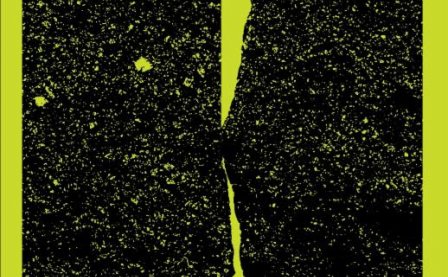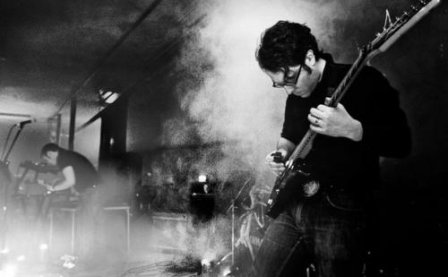For a long time, the word apocalyptic found its way into any review of a post-rock album that contained at least one long crescendo. It’s an easy descriptor for music that seeks an epic tone, and the paranoiac field recordings on, for example, Godspeed You! Black Emperor’s Lift Yr Skinny Fists Like Antennas to Heaven only heightened the anxiety that all was coming to an end. It’s tough to say whether the lack of vocals rendered these albums Rorschach tests for rock critics who feared the loss of hooks and choruses were a sign of the end times or whether the artists intended to invoke great catastrophes with their walls of feedback. But while it’s certain that catastrophe is written all over Locrian’s high-concept Return to Annihilation, the experience is a step removed from the anxiety of early post-rock: here the listener trudges through the burnt-out husk of a world, its structures transfigured, estranged from their original forms.
Bang or whimper, it always struck me as odd that what most were calling “apocalyptic” music was so relentlessly structured, even to the point of cliché. The dénouement was always too simple, an easy comedown after the climax, sometimes with a bit of lingering ambience or swirling guitar feedback. Locrian’s structures are not so easy to decipher. While repetition and riffage feature prominently, especially in the guitar lines, the easy layering on of distorted leads in crescendo occurs infrequently on Return to Annihilation, and where it does, it doesn’t necessarily finish a piece, but develops it, preparing the listener for the moments at the bottom of the crescendo’s collapse. These tropes play nicely within the concept: the narrator sleepwalks through a wasteland after a cataclysm, reality shot through with dreams and their dreams splintered by reality; where the journey’s crescendo ends, the dream begins, and the dream ends in the horror of reality.
Repetition seems appropriate to cataclysm, in that seeking shelter or food would require some relentless trudging across barren ground. It is, however, one of the more frustrating aspects of this album. Even with Locrian’s diverse sonic palette, they remain firmly tied to the rock paradigm, relying on strong riffs, pounding drums, or moving synth lines to propel their songs forward. It’s not inappropriate, and Locrian don’t sound dated, but some tracks, like the majority of “A Visitation from the Wrath of Heaven” and “Two Moons,” suffer from a lack of drama. In fact, Return to Annihilation rarely defies expectations; most of its tracks evoke the dark emptiness and horrific beauty that one assumes would accompany the catastrophic nightmare. But while Locrian’s molding of the rock idiom to the apocalyptic theme isn’t novel, their use is often more nuanced than their predecessor’s appropriations of the same ideas.
Thankfully, despite the promotional material citing references ranging from Benjamin’s Arcades Project and Thomas Browne’s Hydriotaphia, Urn Burial to Samuel Delany’s Dhalgren and Genesis’ The Lamb Lies Down on Broadway, you can listen to all of Return to Annihilation without knowing it’s a concept album (and still absorb its desolate tone). Locrian never stray into the excess of prog rock’s pillars while still telling complex stories. Even the vocals are buried under wailing guitars and hazy production (not to mention vocalist Terrence Hannum’s strident delivery). The conceptual layer manifests most evidently in the album’s structure, containing two sides that seem to mirror one another, each ending with a four-part track, both of which contain some of the album’s most evocative moments. It’s the final dream sequence, “Hydriotaphia,” the third part of the final track, that renders the conceptual basis readable. In stark contrast to the finale “In Felsic Splendor,” its dream world feels both absent and hopeful, soon to be killed by the last pummeling assault.
For centuries, so many easy apocalypses have been perpetrated on a welcoming mass culture and many more in recent days. It’s become a joke and yet also a meta-narrative, concealing within its opaque shell the embryo of a messianic hope. Indeed, some messiahs seem to have already hatched. However, Locrian’s “noctambulist,” their sleepwalker, does not rely on the chosen-one mythos for its character details. His story is the endlessly repeating cycle of the pacifying dream and horrific reality of disaster, inescapable, crushing, and yet somehow glorious. This play of image and reality provides a subtle reading of the cultural fascination with catastrophe and the nearing certainty that we may face one. Until then, the apocalypses will continue unabated, the shifting between New World Orders and hopes to be met or violated will repeat, relentlessly, until it’s all over or a new age dawns.
More about: Locrian




